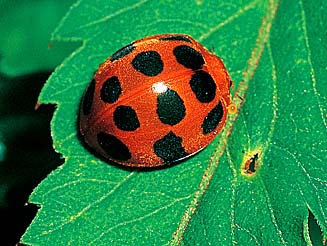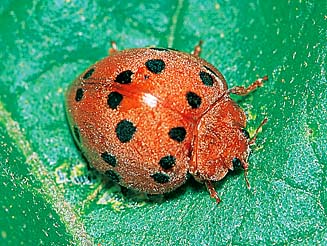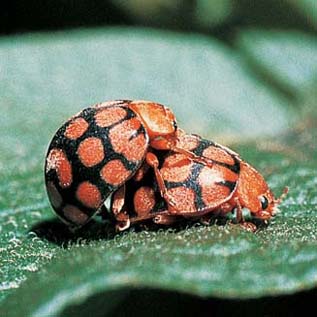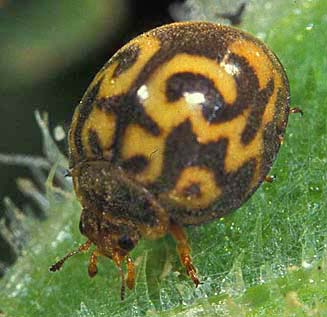|
Subfamily: Epilachninae
Life > Eukaryotes > Opisthokonta > Metazoa (animals) > Bilateria > Ecdysozoa > Panarthropoda > Tritocerebra > Arthopoda > Mandibulata > Atelocerata > Panhexapoda > Hexapoda
> Insecta
(insects) > Dicondyla > Pterygota > Metapterygota > Neoptera > Eumetabola >
Holometabola > Coleoptera (beetles)
> Polyphaga > Superfamily: Cucujoidea > Family:
Coccinellidae (ladybirds)
These are large,
pubescent (hairy) beetles. Adults and larvae of all species are are phytophagous
(eat plants) and many are pests of cultivated crops. The larvae of this
subfamily can be distinguished from those of the other subfamilies by the long,
branched spines on the dorsal ad lateral surfaces. In late summer large numbers
of adults migrate and congregate on high places such as hill-tops.
Some Epilachninae species
 |
 |
|
Henosepilachna bifasciata, Cucurbit Ladybird, 8mm.
[image by M. Picker & C.
Griffiths ©, from Field Guide to Insects of South Africa,
used with permission]. |
Epilachna paykulli, Nightshade Ladybird, 6mm.
[image by M. Picker & C.
Griffiths ©, from Field Guide to Insects of South Africa,
used with permission]. |
|
 |
 |
|
Epilachna dregei,
mating pair.
[image by A. Weaving ©, from Field Guide to Insects of South Africa,
used with permission]. |
Epilachna undulata (See
developmental stages).
[image by H. Robertson, ©,
Iziko]. |
Page by Margie Cochrane
|
